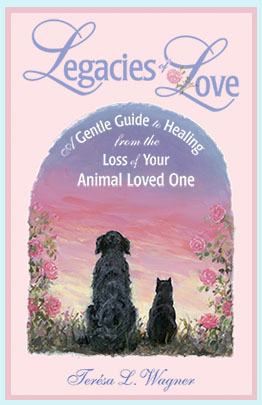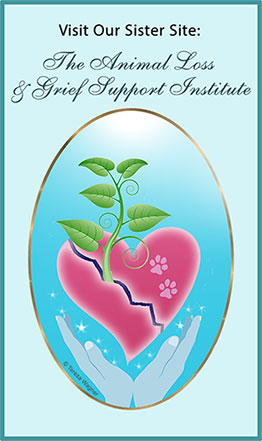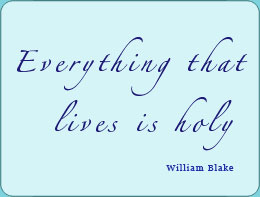Exploring Myths About Healing Grief
Teresa Wagner
www.animalsinourhearts.com
copyright 2010 Teresa Wagner all rights reserved
www.animalsinourhearts.com
copyright 2010 Teresa Wagner all rights reserved
The goal of grief recovery is to heal the heart and to use the crisis of loss to grow. Healing the heart can include understanding and lessening feelings of pain, confusion, resentment, guilt or other difficult emotions, while strengthening a sense of acceptance and peace around our loss. Using the crisis to grow can include identifying and cherishing the mutual gifts of the relationship, fully embracing the lessons emerging from the loss, and consciously choosing to use them in our lives. Integrating the gifts and lessons of the relationships into our way of being may be the finest tribute we can make to our animal loved ones. Grief recovery is not just about feeling better, it is about becoming more whole. It is a conscious choice to heal and grow. And as we journey through our healing process, it can help to dispel some myths about grieving.
One common myth about grief we often hear is “you’ll get over it.” We don’t “get over” our grief from a major life loss, it becomes part of who we are. When someone suggests that we “get over it” the implication is that we can let it go from our lives as if nothing truly significant has happened--that we can snap out of it, easily put it behind us, or perhaps even easily replace what was lost. Allowing our grief to become part of who we are, on the other hand, doesn’t mean we live in a state of grief forever. It means that rather than pretend nothing traumatic has happened, we can face what has happened, squarely and with courage, and attempt to learn to accept death and loss as part of our life. Moving on from an intense experience such as grief without fully processing its meaning is not fully living--it’s pretending. So we don’t “get over” grief, but we can consciously heal from it, and move on in our lives with deepened meaning from the experience.
A second myth is that we can heal our grief exclusively from either an emotional or a spiritual frame of reference, that we do not have to address both. Grief is an emotionally painful process. Deep and poignant feelings cry out to be faced and dealt with. Yet it is a spiritual process also. Psychological work helps us heal feelings, to find comfort and support, but it is only connecting with our spirit--with our soul--that allows us to find meaning, to see the bigger picture, and find answers to our questions about life and death. It is in both completing our emotional unfinished business along with embracing our spirituality that we find peace.
Approaching our grief with only a spiritual perspective can create an unhealthy by-pass of emotions, pretending our feelings will go away simply because we’ve spiritually accepted the death of our loved one. This doesn’t work. Strong feelings don’t disappear, they just go underground and come back to haunt us later, pushing us to recognize and heal them. Strong spiritual beliefs do not eliminate our need to heal emotionally. But what they can do, powerfully yet gently, is shift the basic quality, the very character of our emotional pain so it is experienced not with suffering, but with grace.
Processing our feelings can help bring us emotional clarity and completion. Embracing our spirituality brings us the opportunity for peace and grace. We need and deserve both.
A third myth is that time heals all wounds. Time does not heal emotional wounds. The passage of time merely lessens the intensity of our pain, or allows us to escape it through new activities or relationships. Only conscious intent truly heals, not time alone. Healing our grief is not a passive process. Understanding the often described stages of grief such as shock, anger, suffering and disorganization, depression, and acceptance, can help us normalize the range of emotions we feel and our experience. But if we merely wait for the stages of grief to pass through us, we’re taking a passive, reactive stance in regard to our loss, making us even less empowered than we may already feel after a major loss. It takes proactive, conscious intent to heal grief. When we have a physical wound, if we allow only the passage of time to heal it, with no medication, it may scar over. Our body may still function, but the area may always be tender, and may not fully function. The same is true of our grief. We can allow time to carry us to a phase of less pain, to allow us to bury the hurt as we become involved in activity, but we’re not really healed then, just scarred over, and not fully functioning. When we bury any pain, part of our energy is used to protect that place of burial. The energy used for that protection is energy unavailable to us for full living in the present. Though healing is certainly not a linear experience that we can control and manage like a project, healing is an intentional process that we can navigate instead of passively waiting to get better. Just as the captains of ships cannot control weather or waves, but nevertheless go to sea prepared to navigate their journey versus merely being at the mercy of the elements, we too, can skillfully navigate our journey through grief and come through it enriched in a place of greater peace.
If you like the use of visual metaphor, you may enjoy imagining your journey of grief occurring as a trip over a humpback bridge. Evelyn Isadore, my first spiritual teacher (human teacher) had a beautiful Asian painting of a humpback bridge in her office. She used to tell her students that true healing from life problems and hurts entailed mustering the faith and courage to cross the humpback bridge of transition. You see, when first stepping onto a humpback bridge, we can’t see anything but the highly steeped bridge ahead and deep water below. We can’t see the other side and the walk to the top seems arduous. To go across, to get to that full healing, we must first go straight uphill. We can get scared and stay stuck at our first step onto the bridge. We can turn around and forget even trying to go over this bridge of healing out of fear. We can even give up and jump into the waters out of despair or depression. Or we can garner support and comfort in every way we know to help us keep walking over the bridge. We can take a leap of faith to believe it’s worth it to keep going.
Once at the top, the vista is clear, wide, peaceful and all encompassing. From this vantage point of the big picture we can see the past from where we’ve come and the possibilities for our future. We can better see and appreciate all the gifts we still have from the relationship that is physically gone from us. Looking upward we can feel the grace of God in the sky and feel the spirit of our loved ones with us. Looking downward we can see our true selves reflected in the water. From this place we can much more easily complete unfinished business, and we can see the lessons and gifts from where we’ve come. The journey downhill from the top is almost effortless in comparison to the arduous climb up, giving us time to recover from our steep climb and to integrate all we’ve learned, preparing us to reach the other side more whole, ready to move on. There is not only hope at this point in the journey, but knowledge that there is opportunity for joy in life again, even without the one we have physically lost by our side.
These three distinct components of the journey over the bridge--mustering the strength and courage to just keep going, going far and high enough to see the whole picture to come to completion, and time to integrate our learning to move on--can be likened to three necessary components of healing grief:
Coping and Finding Comfort
Completion of Emotional Unfinished Business
Creation--Moving On and Transforming Grief into Growth
To further explore these issues you may want to:
Participate in the 8 hour teleclass workshop Legacies of Love:
Listen to a download of the audio book Legacies of Love: A Gentle Guide to Healing From the Loss of Your Animal Loved One
Read through the web pages on Comfort and Support in Your Time of Grief








